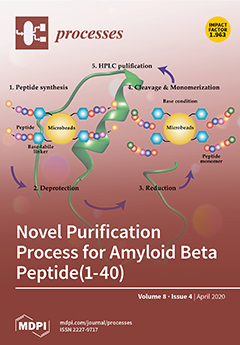Over the past two decades, the alkaline persulfate oxidation (PO) with thermal and/or ultraviolet (UV) assisted digestion method has been widely used for digestion of nitrogen containing compounds (N-compounds) in water quality routine analysis in laboratory or on-line analysis, due to its simple principle, high conversion rate, high percent recovery, low-cost. However, this digestion method still has some inevitable problems such as complex operations, high contamination potential, batch N blanks, higher reaction temperature (120–124 °C) and time-consuming (30–60 min). In this study, ozone (O
3) was selected as the oxidant for digestion of N-compounds through analysis and comparison firstly. Secondly, we proposed and compared the UV and/or ultrasound (US) combined with ozone (UV/O
3, US/O
3 and UV/US/O
3) synergistic digestion methods based on O
3 with sole O
3 oxidation method on digestion efficiency (digestion time and conversion rate) of standard N-compounds. Simultaneously, the influence of reaction temperature, pH of water sample, concentration of O
3 and mass flow rate, UV intensity, US frequency and power on digestion efficiency were investigated, and then the optimum parameters for digestion system were obtained. Experimental results indicated that UV radiation can effectively induce and promote the decomposition and photolysis of O
3 in water to generate hydroxyl radicals (•OH), while US can promote the diffusion and dissolution of O
3 in water and intensify the gas-liquid mass transfer process for the reaction system. Meanwhile, results showed that the UV/US/O
3 synergistic digestion method had the best digestion efficiency under the optimum conditions: water sample volume, 10 mL; pH of water sample, 11; O
3 mass flow rate, 3200 mg/h; reaction temperature, 30 °C; digestion time, 25 min; UV lamp power, 18 W; distance between UV lamp and reactor, 2 cm; US frequency, 20 kHz; US power, 75 W. The conversion rate (CR) of synthetic wastewater samples varied from 99.6% to 101.4% for total dissolved nitrogen (TDN) in the range of 1.0~4.0 mg/L. The UV/US/O
3 synergistic digestion method would be an effective and potential alternative for digestion of N-compounds in water quality routine analysis in laboratory or on-line analysis.
Full article





